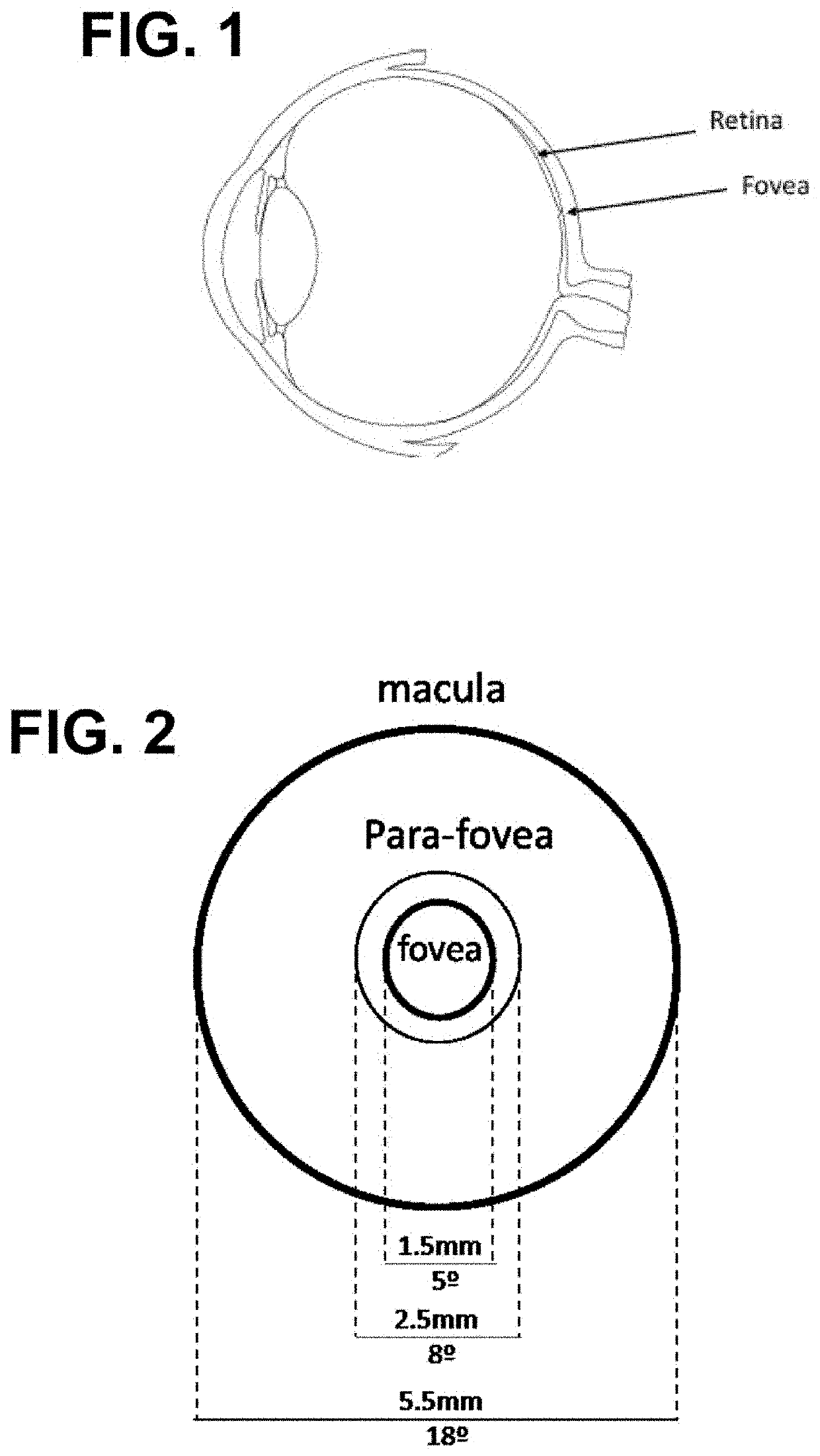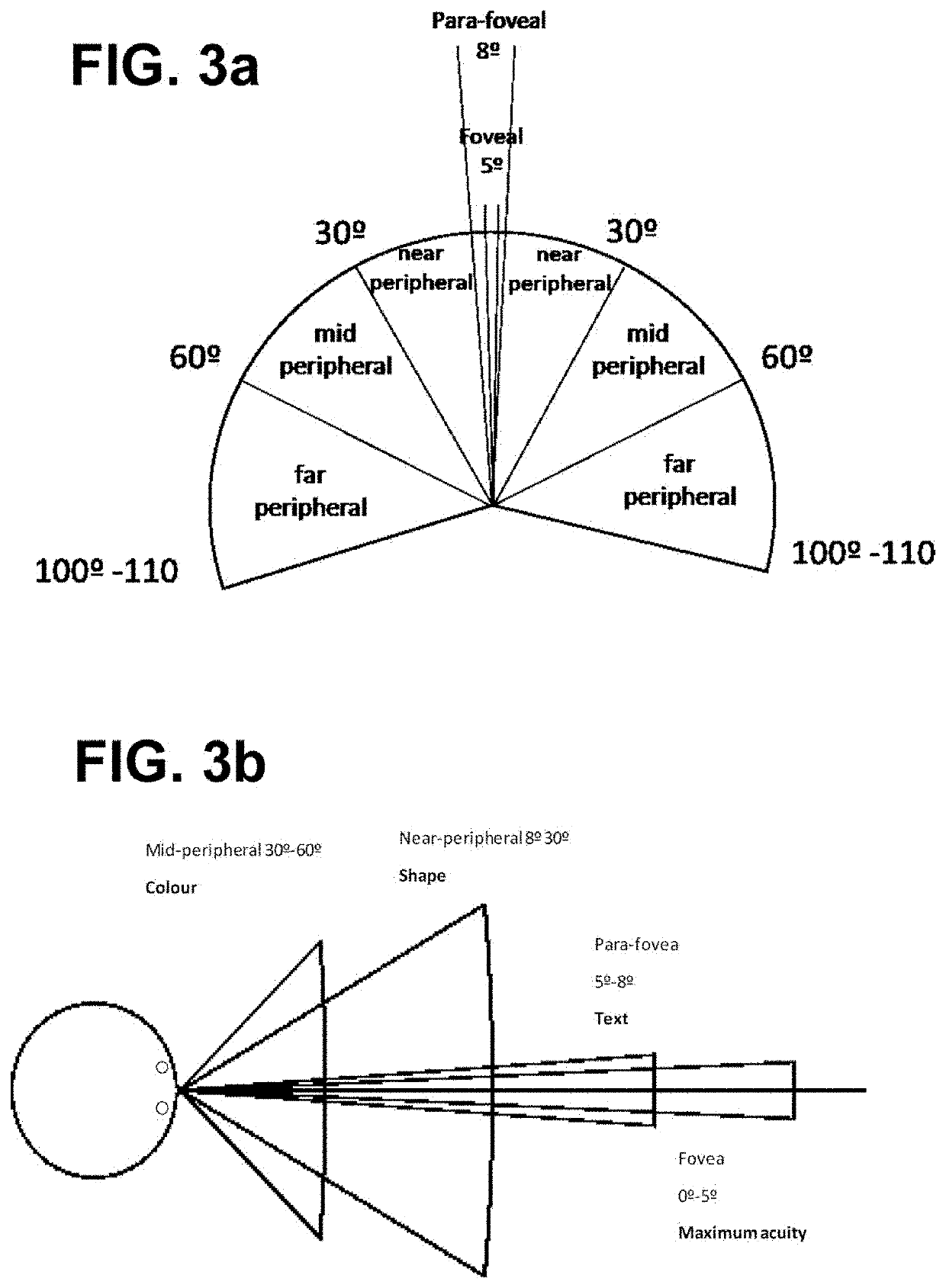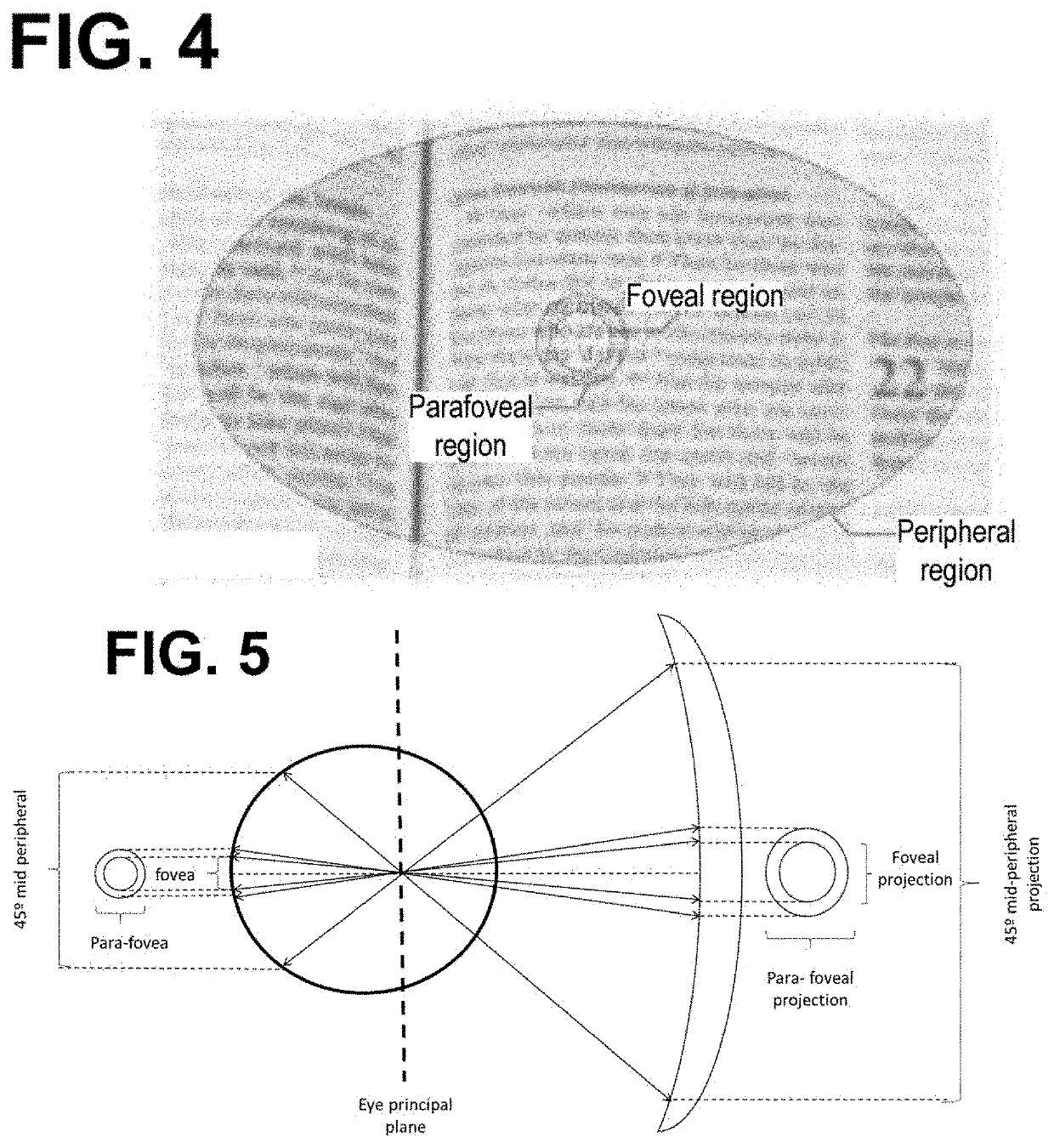Progressive ophthalmic lens
- Summary
- Abstract
- Description
- Claims
- Application Information
AI Technical Summary
Benefits of technology
Problems solved by technology
Method used
Image
Examples
example 1
[0159]An optical lens element according to the present invention was designed having 2.00 D addition power in the lower or near viewing zone and standard corridor length (the near vision point situated 15 mm below the fitting cross). The contour plots of surface astigmatism and mean surface power respectively for the optical lens are given in FIGS. 8a and 8b. The design provides a relatively wide upper or distance viewing zone with the 0.5 D astigmatic contour rising towards the periphery. The lens design exhibits very low values of astigmatism along the lens progression path (0.4016 D for foveal projection and 0.5285 D for para-foveal projection). In addition, the maximum values of gradient of astigmatism along the progression path for foveal projection (0.269D) and para-foveal projection (0.275D) are obtained. We can see also that the maximum value of astigmatism and gradient of astigmatism for peripheral metric are below maximum values of table 2.
TABLE 3maximum values of the metr...
example 2
[0160]An optical lens element according to the present invention was designed having addition 2D and a short corridor length (the near vision point situated 12 mm below the fitting cross. Since this distance is not 15 mm, values of proposed maximum of astigmatism and maximum of gradient of astigmatism in the tables are recalculated to the current corridor length. For instance, foveal projection for the lens in this case, which has a corridor length of 12 mm leads to a maximum of astigmatism value of 0.5D:
(−0.03*12)+0.86D=0.50D,
which is always greater than the measured maximum of the lens according to the invention.
TABLE 5maximum values of the “Acuity” metricsfor the progressive lens of example 2.Maximum valueAcuity metric: Part ofMaximum valueof gradientthe retina that isof astigmatismof astigmatismprojected in thefor metricfor metricprogression path“Acuity” (D)“Acuity” (D / mm)Fovea0.431 (0.317Para-fovea0.61320.412
TABLE 6maximum values of the “Peripheral” metricsfor the progressive l...
example 3
[0162]An optical lens element according to the present invention was designed having of addition 2D with large corridor length, (the near vision point situated 18 mm below the fitting cross). FIGS. 10a and 10b shows the map of astigmatism and power of this lens.
[0163]Since this distance is not 15 mm, values of proposed maximum of astigmatism and maximum of gradient of astigmatism in the tables are recalculated to the current corridor length. For instance, foveal projection for the lens in this case, which has a corridor length of 18 mm leads to a maximum of astigmatism value of 0.35D instead of 0.41D:
PUM
 Login to View More
Login to View More Abstract
Description
Claims
Application Information
 Login to View More
Login to View More - R&D
- Intellectual Property
- Life Sciences
- Materials
- Tech Scout
- Unparalleled Data Quality
- Higher Quality Content
- 60% Fewer Hallucinations
Browse by: Latest US Patents, China's latest patents, Technical Efficacy Thesaurus, Application Domain, Technology Topic, Popular Technical Reports.
© 2025 PatSnap. All rights reserved.Legal|Privacy policy|Modern Slavery Act Transparency Statement|Sitemap|About US| Contact US: help@patsnap.com



